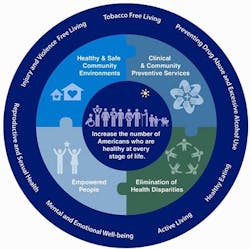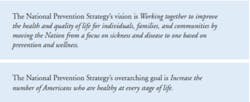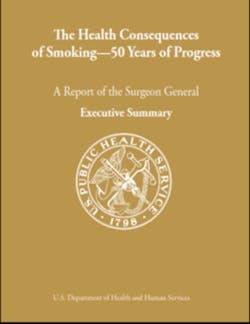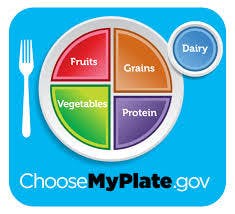Prevention is The Name of the Game!
By Maria Perno Goldie, RDH, MS
The National Prevention, Health Promotion, and Public Health Council Annual Status Report was released July 1. The report highlights advancement in implementing the National Prevention Strategy (NPS) and reaching its goal of increasing the number of Americans who are healthy at every stage of life.2 The NPS pictures a prevention-oriented society where all segments recognize the value of health for individuals, families, and society and work together to achieve better health for Americans.
There are seven priority areas in the NPS. They are:
- Tobacco-free living
- Preventing drug abuse and excessive alcohol use
- Healthy eating
- Active living
- Injury and violence-free living
- Reproductive and sexual health
- Mental and emotional well-being.
The new report describes many examples of how the 20 federal departments and agencies that make up the National Prevention Council are incorporating health into their programs and policies, working on various issues. One example is encouraging healthy child development by implementing programs that support families and promote healthy school and neighborhood environments.1 Regarding elimination of health disparities, the key indicator for oral health is the “Proportion of individuals who are unable to obtain or delay in obtaining necessary medical care, dental care, or prescription medicines.” The data source for this is Medical Expenditure Panel
Survey, Agency for Healthcare Research and Quality, and the frequency is annually. The most recent data point was 10.4% in 2011.
There are numerous goals in causes of death in the areas of healthy living, coronary heart diseases, stroke, respiratory diseases, cancer, and injury. A section on environmental health and safety focuses on air quality, asthma, and toxic pollutants. In clinical and community services, there are indicators in electronic health records, hypertension, cholesterol levels, colorectal cancer screening, and influenza vaccinations. Health literacy, elimination of health disparities, tobacco-free living, preventing drug abuse and excessive alcohol use, healthy eating, active living, injury and violence free living, mental and emotional wellbeing, and reproductive and sexual health are all covered.1
For the goal of Increasing Tobacco Free Environments, the report references The Health Consequences of Smoking—50 Years of Progress: A Report of the Surgeon General, 2014. We know that tobacco use is the leading preventable cause of death and disability. The report presents initiatives to lessen or end the prevalence of tobacco-related death and disease. The National Prevention Council will continue to develop a full range of tobacco control strategies, including educating the public about the dangers of tobacco use, promoting cessation services, and increasing tobacco-free environments. This is certainly an area where oral health-care providers can contribute time and expertise.
Another area where we can help our patients and communities is in nutritional counseling. Encouraging healthy food choices and adhering to the Dietary Guidelines for Americans are ways to educate consumers.4
As the saying goes … An ounce of prevention is worth a pound of cure!
References
- National Prevention Council, Annual Status Report, Washington, DC: U.S. Department of Health and Human Services, Office of the Surgeon General, 2014. Available at http://www.surgeongeneral.gov/initiatives/prevention/about/annual_status_reports.html.
- http://www.surgeongeneral.gov/initiatives/prevention/strategy/.
- The Health Consequences of Smoking—50 Years of Progress: A Report of the Surgeon General, 2014. http://www.surgeongeneral.gov/library/reports/50-years-of-progress/index.html.
- Dietary Guidelines for Americans 2010. http://www.health.gov/dietaryguidelines/.
- http://www.cnpp.usda.gov/publications/myplate/gettingstartedwithmyplate.pdf.



